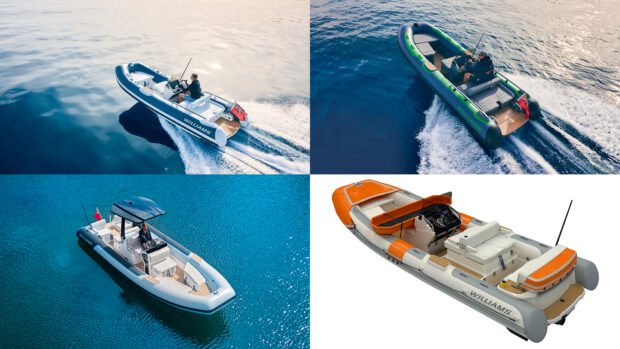Long-awaited report reveals what happened in moments up to accident that saw two family members killed
The long-awaited report into the RIB tragedy on the Camel Estuary last May that saw a father and his daughter killed by a runaway RIB has been released by the Marine Accident Investigation Branch (MAIB).
The accident happened on May 5. TV executive Nick Milligan was with his wife, Victoria, and their four children on board their 8m Cobra RIB, Milly, on the first boat trip of the season.
During a high-speed turn at around 3.45pm that afternoon, the family were thrown into the water. The RIB continued to circle out of control, running over the family and killing Mr Milligan, 51, and his eight-year-old daughter Emily and severely injuring wife Victoria and four-year-old son Kit.
An initial report into the accident released soon after the incident revealed that the driver of the RIB was not wearing a kill cord at the time of the family’s ejection from the boat.
This new, much longer report reinforces the fact that the biggest contributing factor to the accident was that the driver was not wearing a kill cord. But it has also shed light on the events leading up the accident, which haven’t been known until now.
Just minutes before the accident, Mr Milligan stopped the boat, removed the kill cord from his leg and went to the stern of the boat. His wife, Victoria, stood by the helm to make sure none of the children knocked the throttle.
Once Mr Milligan was finished at the stern, Mrs Milligan took the helm, failing to attach the kill cord. She pointed the boat towards their home berth at Rock, but soon after the decision was taken to turn back out into the estuary for another run.
Mrs Milligan was reluctant to make the starboard turn, unsure whether there was enough room between the boat and the beach, but started the slow, wide manoeuvre under encouragement from Mr Milligan and the children.
At this point, Mr Milligan reached across from the navigator’s seat to grab the wheel with his right hand and the throttle in his left, then increased the boat to full revs as he forced the boat into a sharper starboard turn.
The boat accelerated strongly into the turn, but the hull lost grip with the water, resulting in it skidding briefly across the surface of the water. The keel then bit again, leading to a violent roll to port, dumping the family into the water.
In an attempt to replicate the accident for the report, trials were conducted in Portland, with professionals able to produce the same sideways skip across the water that the family experienced, which led to sudden g-forces and a change in roll angle of 30° in half a second.
The children, who were in the bow of the boat, stood no chance of staying on under these conditions, and the helm bench seat that Mr and Mrs Milligan were sitting on was not sufficient to keep them on board.
In trials, ballast was used to replicate the weight of the children and it was noted that when the ballast was moved to the rear of the RIB, there was a distinct improvement in the boat’s handling characteristics.
This particular Cobra RIB operates at a high heel angle in turns, up to 25-30°, which can suddenly increase to an estimated 35-40° in tight turns at speed. At this angle the keel was noticed to lift clear of the water, allowing the stern to slide sideways, a process known as ‘hooking’.
Although this handling characteristic was described as “undesirable”, it is by no means unique to this particular make and model of boat.
It’s clear that despite this, the deaths and injuries could have been avoided had Mrs Milligan been wearing the kill cord, and worryingly the MAIB suggests that from the evidence gained through this and previous investigations that kill cord use is “still sporadic” and that “a significant proportion of drivers do not routinely attach kill cords when they take the helm”.
The RYA has responded to the accident by launching a new safety initiative, the first move of which is to reinforce the importance of kill cords on small, fast boats. It has also been recommended to revise its powerboat courses, which Mr and Mrs Milligan had completed up to Powerboat Level 2, to cover the hazards presented by powerful craft at high speed, with specific guidance on ‘hooking’ and appropriate seating and handholds.
Cobra RIBs, meanwhile, has been recommended to review the design of its range and make modifications to reduce the steep angle of heel which some of their boats adopt in tight turns.
Motor Boat & Yachting will be covering the report in more depth in the April 2014 issue of the magazine.
Subscribe to the print version of MBY
Subscribe to a digital version of MBY











